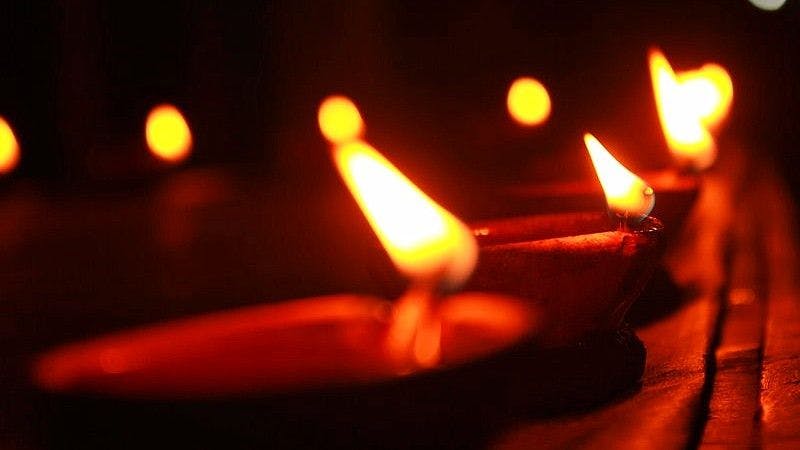Dipalika - The Jain Diwali
BOOKMARK
Firecrackers, sweets, lamps and gifts, Diwali is a time for all this and more. On the day of Amavasya, when there is complete darkness, millions of diyas (lamps) and lights are lit to signify the victory of good over evil.
Diwali the most popular festival in India is celebrated to commemorate Lord Ram's return to Ayodhya after 14 years of exile. Diwali is celebrated not only by Hindus but by Jains, Sikhs and Buddhists of the Newar region belonging to the Vajrayana sect of Buddhism. While Sikhs celebrate it as Bandi Chor Diwas as Guru Hargobind was released from prison by the Mughal Emperor Jahangir on this day, Jains believe this is the day Mahavir, the 24th and the last tirthankar of the Jains attained nirvana or spiritual salvation.
Within Hinduism as well, there are different reasons why Diwali is celebrated. In West Bengal, it is the celebration of the arrival of goddess Kali, whereas, in Odisha and Andhra Pradesh, people celebrate the ritual of Kaunriya Kathi by burning jute sticks to invite their ancestors from heaven on the day of Diwali.
In Jain traditions and philosophy, Mahavir is considered to be the last of the 24 tirthankara or Jina - the enlightened soul. Nirvana means the liberation of the soul from all the karmic bondage and the cycle of birth and death. After attaining Nirvana, a soul is said to have attained its true and pristine nature of infinite bliss, infinite knowledge and infinite perception.
In the 5th century BCE, the region of present-day southern Bihar was the part of Magadha Mahajanapada and ruled by the Haryanka dynasty. Mahavir spent 14 years preaching in Rajgriha. It was in the reign of King Ajatshatru, that Mahavir came to Pawapuri around 20 Kms from Rajgriha present-day Rajgir. At the age of 72, Mahavir attained nirvana at Pawapuri in Nalanda district of present-day Bihar. As per popular belief, Mahavir attained nirvana after meditating in one spot in a position of padma-ashana.
The place where Mahavir attained nirvana at Pawanpuri has a picturesque Jain temple, Jal Mandir. The temple stands surrounded by a huge rectangular tank hence the name ‘Jal’ mandir. It is believed that Jal mandir has Mahavir's footprint and there is a place reserved in the temple for its worship.
The festival of Diwali was first referred to in Jain canonical literature as Dipalikaya, or light leaving the body, It is said that Earth and Heaven were illuminated with lamps to mark the occasion of Lord Mahavir’s enlightenment. In Jainism, Diwali was first referred to in Harivamsha Purana written by Acharya Jinasena as Dipalika in the 8th century CE. It is believed that since then Jains celebrate the famous festival of Diwali to worship Mahavir on the occasion of his nirvana.
Diwali is the occasion to pay tribute to Mahavir. The Swetambara sect of Jains observes fasting during the three days of Diwali. The devotees sing and chant hymns in praise. They recite phrases from the Uttaradhyayan Sutra which contains the last preachings of Lord Mahavir.
The day after Diwali also marks the beginning of the Jain New Year. From the day of Mahavir’s nirvana, a new era was started known as the Vira Nirvana Samvat or the Vira Samavat. Also, there is some dispute among the two sects of Jainism – Swetambara and Digambara regarding the year in which Mahavir attained nirvana. According to the literature of Svetambara tradition, it was in the 527 BCE and Digambara Jain tradition claims Mahavir attained nirvana in 510 BCE.
Vira Nirvana Samvat, the Jain era starts from 527 BCE which is popularly accepted today. Every year Diwali is celebrated by the Jains all over the world; however, the year 1974 marked a special anniversary. On 13th November, there were public celebrations across India to commemorate 2500th anniversary of Mahavir’s nirvana. Called the ‘Bhagavan Mahavir Nirvana Mohatsav’ it was presided over by the then Prime Minister, Indira Gandhi.
The popularity and diversity of a festival like Diwali is symbolic of how the numerous communities and religions in India are bound together by a shared history. Let's light a lamp and celebrate that!










